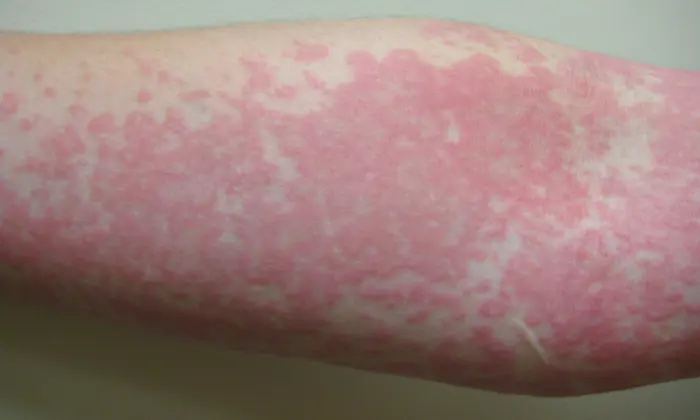Actinic prurigo (AP) is a chronic photosensitive skin condition that primarily affects individuals with a genetic predisposition, especially those of Native American descent. This disorder, often triggered by sun exposure, can cause significant discomfort and cosmetic concerns. In this detailed guide, we examine the symptoms, underlying causes, diagnostic approaches, and treatment options for managing actinic prurigo effectively.

What is Actinic Prurigo?
it is a rare, hereditary, and inflammatory photodermatosis, typically presenting as itchy, inflamed papules, plaques, or nodules on sun-exposed areas of the skin. Unlike common sun allergies, AP tends to occur year-round, with symptoms often worsening in spring and summer. It is linked to a genetic component involving the HLA-DR4 allele.
Symptoms
The clinical manifestations of actinic prurigo vary but generally include:
- Skin Lesions: Raised, red, and itchy papules or plaques appear predominantly on sun-exposed areas such as the face, neck, arms, and hands.
- Cheilitis: Chronic inflammation of the lips, often leading to cracks and dryness, is a hallmark of AP.
- Scarring: Long-standing lesions may heal with scars or hyperpigmentation.
- Eye Involvement: Some individuals may experience photophobia or conjunctivitis as part of their symptoms.
Symptoms typically begin in childhood or adolescence and persist into adulthood.
Causes and Risk Factors
it results from a complex interplay between genetic predisposition and environmental triggers. The primary factors include:
- Genetic Susceptibility: HLA-DR4 and related alleles are strongly associated with actinic prurigo, especially in individuals of Native American ancestry.
- UV Radiation Exposure: Ultraviolet light, particularly UVB, is the main trigger that exacerbates skin lesions.
- Immune System Dysfunction: Overactive immune responses to UV-induced damage lead to inflammation and skin lesions.
Diagnosis
Accurate diagnosis of actinic prurigo involves a combination of clinical evaluation and laboratory testing:
- Clinical Examination: Dermatologists assess the distribution, morphology, and chronicity of skin lesions.
- Histopathology: A skin biopsy reveals lymphocytic infiltration, epidermal hyperplasia, and other characteristic features.
- Phototesting: Testing skin response to UV radiation helps confirm photosensitivity.
- Genetic Testing: Identification of the HLA-DR4 allele may support the diagnosis.
Treatment Options
Treatment of actinic prurigo focuses on symptom relief, prevention of flare-ups, and minimizing skin damage. A multidisciplinary approach often yields the best outcomes.
1. Sun Protection
Strict sun protection is the cornerstone of actinic prurigo management. Measures include:
- Use of broad-spectrum sunscreens with SPF 50+.
- Wearing UV-protective clothing, hats, and sunglasses.
- Avoiding peak sunlight hours.
2. Topical Therapies
- Corticosteroids: Reduce inflammation and alleviate itching.
- Calcineurin Inhibitors: Tacrolimus and pimecrolimus are effective for sensitive areas like the face.
- Moisturizers: Maintain skin hydration and prevent cracks.
3. Systemic Treatments
In severe cases, systemic medications may be required:
- Thalidomide: The most effective drug for refractory cases, although it requires careful monitoring due to teratogenicity.
- Antimalarials: Hydroxychloroquine may help reduce inflammation and photosensitivity.
- Immunosuppressants: Methotrexate and cyclosporine are considered for resistant cases.
4. Phototherapy
Controlled exposure to narrowband UVB or PUVA phototherapy can desensitize the skin over time, reducing photosensitivity.
5. Biologic Therapies
Emerging biologic treatments targeting immune pathways involved in actinic prurigo show promise. Research is ongoing to validate their efficacy.
Living with Actinic Prurigo
Managing this requires ongoing efforts to avoid triggers, adhere to treatment regimens, and monitor for complications. Support groups and counseling can help patients cope with the psychological and social impact of the condition.
Actinic prurigo is a challenging yet manageable condition with the right combination of sun protection, medical treatment, and lifestyle adjustments. Early diagnosis and tailored interventions are crucial for improving quality of life and minimizing long-term skin damage.